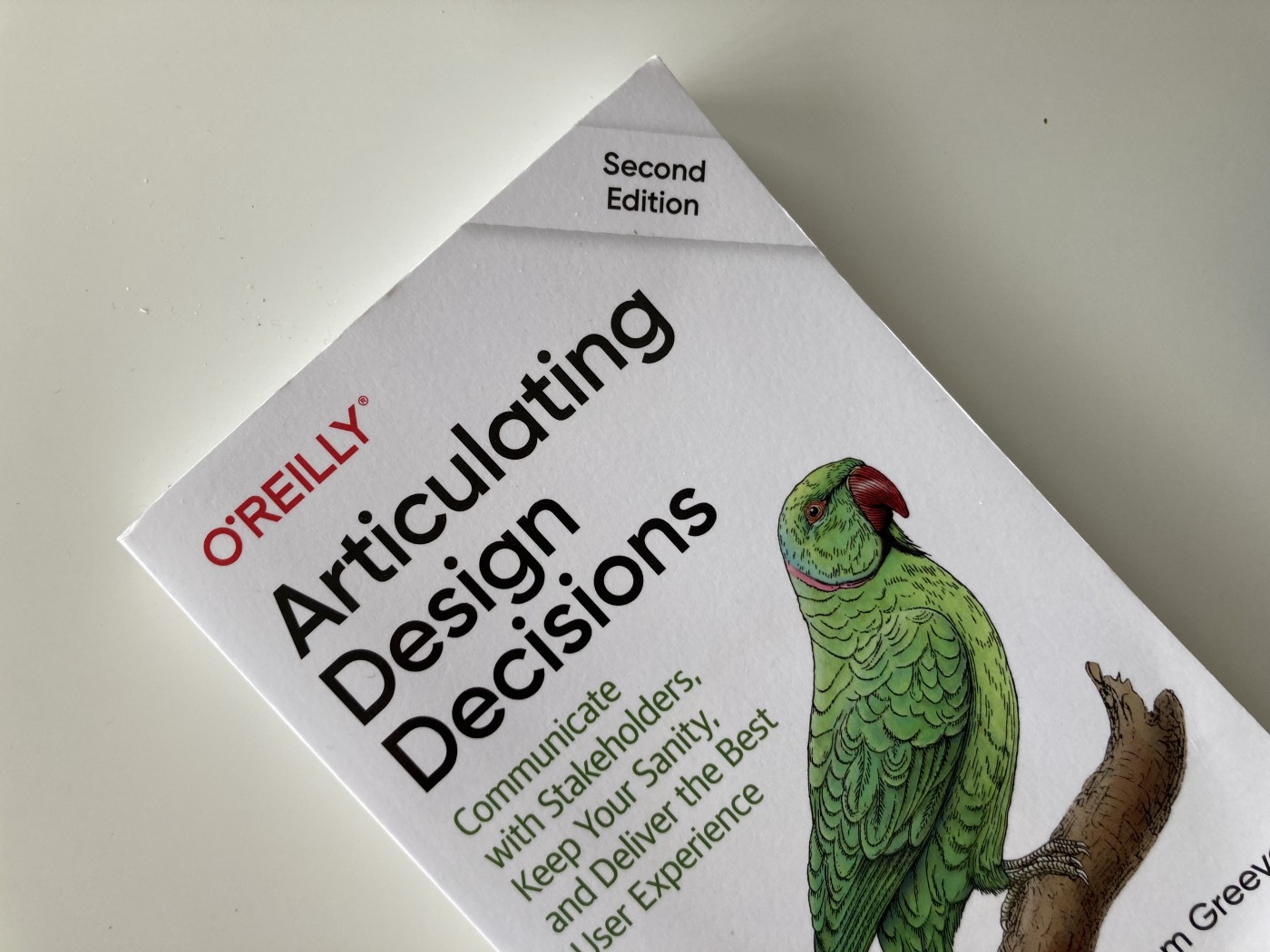TL;DR
This book focuses on helping designers understand, listen, respond, and follow up during those critical design decisions.
We sometimes forget that being a designer is about 50% communication and being able to help articulate why our design decisions are important. This book shares some pragmatic methods and stories to help designers become better at making decisions within a team without losing your soul.
🤔 1. Understand
The first part of the book focuses on the importance of building empathy with our stakeholders — their values, building empathy and quadrant stakeholder maps so that we see the bigger picture beyond their motivations. We also need to ensure we spend some time designing our meeting, from naming the meeting to how we present our work in clear chunks to reduce fatigue and optimise for memory.
👂 2. Listen
Listening, really listening, can be a skill that is often undermined. Using the same listening skills for our research studies can be used with our stakeholders too. This part of the book covers areas such as implicit listening, by using the art of pausing and uncovering their real problems, to explicit listening using better note-taking techniques, including the why, asking better questions, and leading with yes.
🗣 3. Respond
This section is about getting into the right mindset. The book mentions thinking about pitching your designs akin to a door-to-door salesperson hoping the customer will buy or a battle with winners or losers. These old ideas of design critique are not healthy and they don’t move the conversation in a positive direction. Instead, we should try to hear, analyse, process and turn the feedback into useful nuggets.
👍 4. Follow up
A follow-up is like a confirmation of all the important thoughts, decisions, and conversations that went into the meeting. It doesn’t need to be perfect, but purposeful while it’s still fresh in everyone’s mind. Focus on: 1) who was in the meeting, 2) a simple bullet list of what happened, and 3) the most important(!) focus on actions, next steps or expectations as it ensures people feel it was a good use of their time while offloading some of the burdens and allowing the team to get involved in the next steps.
💪 Final thoughts
I found it easy to follow the ideas, methods, and structure of this book. As a seasoned designer, it’s good to sometimes go back over the things that you’ve done time and time again. This book exercises more of that design muscle.
📦 Resources
Stakeholders Mapping
Check out this great stakeholder mapping exercise in Mural to help you map who to 1) keep satisfied, 2) actively engage with, 3) monitor and 4) keep informed.
Stakeholders Values
A starting point to help you understand how different roles and perspectives will affect your project and what you can focus on when working with them.
Example: https://bootcamp.uxdesign.cc/media/35a007ef6b91f61c5ae0a39f3bd07cf7
Stakeholder Stories
Writing user stories for our stakeholders can be useful ways to understand the people we work with better and help us the project from their perceptive.
Example:
Executives
As an executive, I want to see what my team is working on so that I can provide a report back to upper management.
As an executive, I want to provide feedback on the design of my products so that I can help you make them better.
As an executive, I want to provide a vision and roadmap of the future so that my team can be excited about where we are headed.
IDEAL formula
I found these key statements allow me to stay grounded and keep my focus on the users, the problem, and the solution I’m purposing.
Identify the problem
We must always remain focused and ensure that our stakeholders are aware of the problem we’re addressing; otherwise, the conversation can quickly become counter productive. Very briefly state the problem that your design addresses for the purpose of getting everyone on the same page.
Describe your solution
This is where your specific design can be connected to the problem that you’re trying to solve. Make a clear connection between what you did and how it addresses the issue. Without a clear solution, the design is useless and ineffective.
Empathise with the user
Stakeholders can forget about the people at the other end of our products. Our job is to represent them, to feel so burdened for them that we’re driven to action. State how your solution solves the problem for a specific user by calling to mind the people at the centre of your design process.
Appeal to the business
It’s not enough to just fix stuff. All our decisions must be motivated in part by a need to grow the business or organisation. This is where you describe how your decisions are meant to affect goals, metrics, or key performance indicators (KPIs). Bring it up, tie them together, and demonstrate the value.
Lock in agreement
After clearly making your case, directly ask for agreement from your stakeholders. You don’t want to leave this conversation open ended, without resolution. Ask them directly, “Do you agree?” Put them in a position of needing to respond to you, and keep the project moving forward.

No Comments.